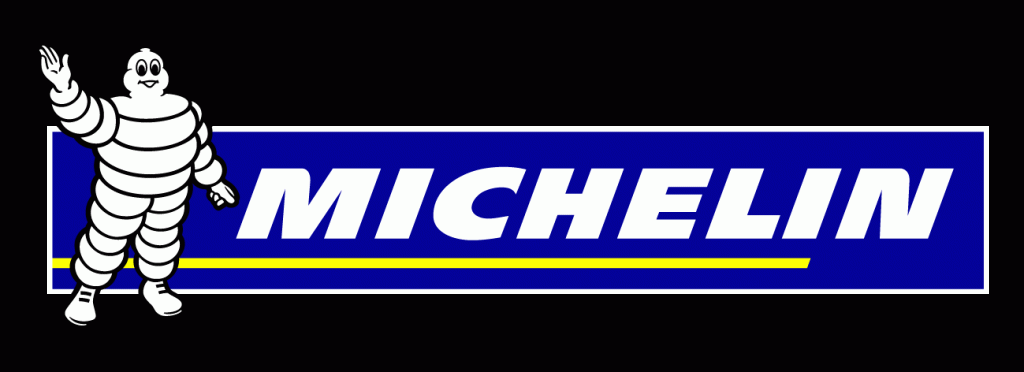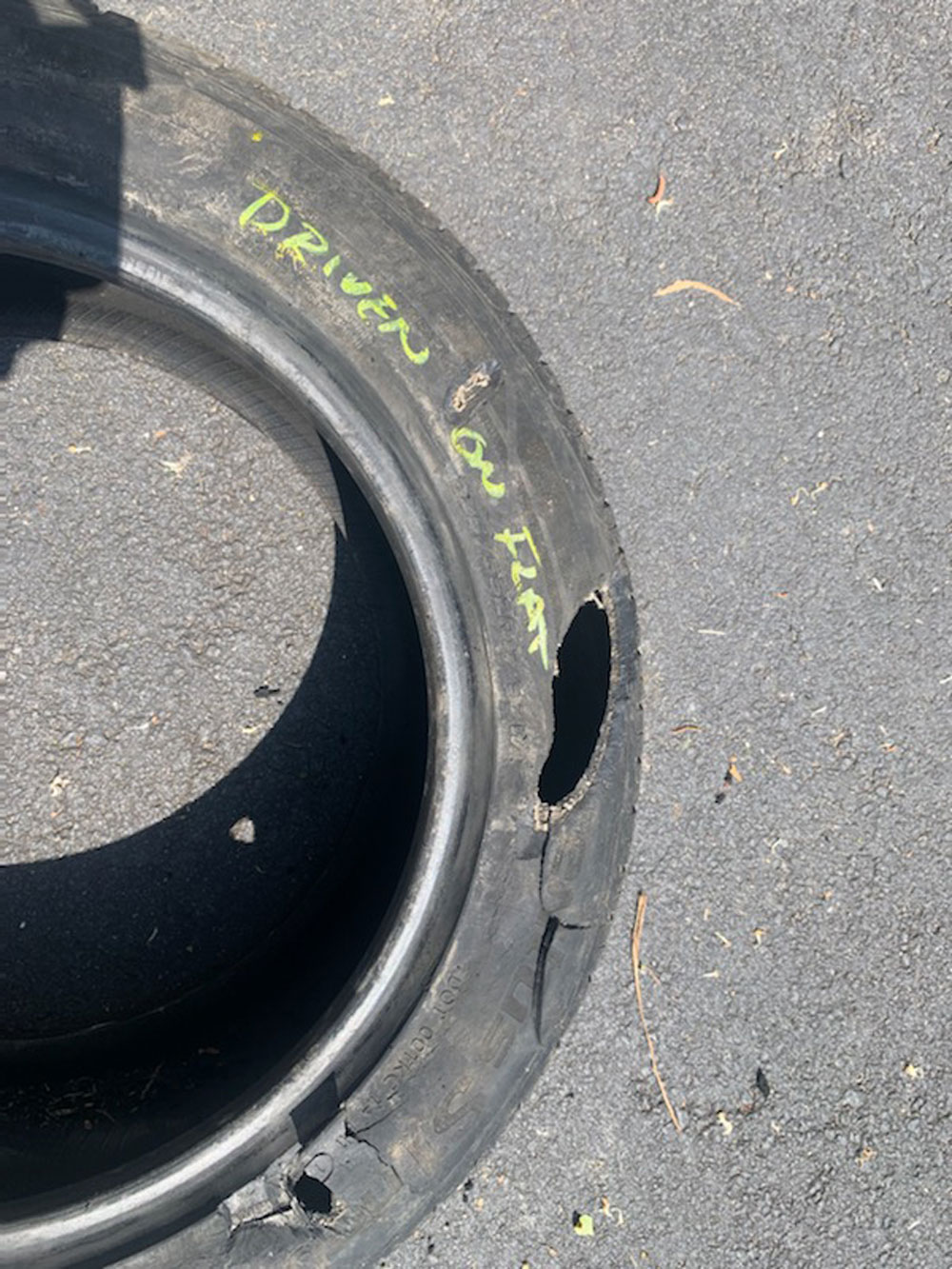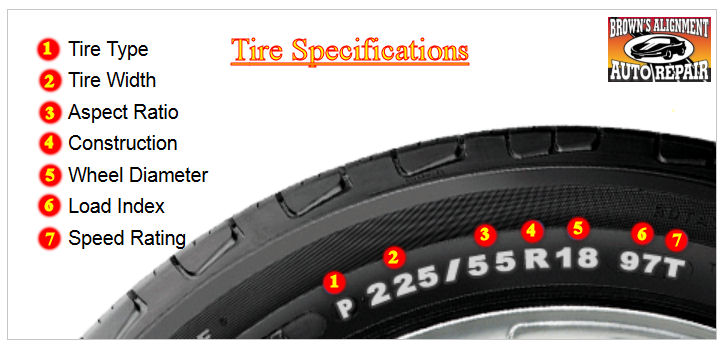THINGS TO KNOW / UNDERSTAND ABOUT TIRES:
Every vehicle has specific specification requirements as to what tire should be installed. Each vehicle is designed to perform with a specific size tire and speed rating. Changing the recommended tire size and or rating may cause the vehicle to not perform as expected. Changing tire size can cause the speedometer to be off. It can also cause the the transmission to not shift properly in vehicles with electronic automatic transmission. Generally it is considered ok to use a higher speed rating but not OK to down grade. Of course it is also recommended to not mix tire speed ratings if possible. If tire speed ratings must be mixed try to keep each axle paired the same rating.
All wheel drive vehicle’s tires must all be the same diameter. Vehicle’s manufacturer recommend that all 4 tires match. This means that all 4 tires should be the same brand, design and most importantly the same tread depth. So, if one tire is damaged and must be replaced you should replace all four. A 1/8” difference in diameter will cause that tire to revolve about 4 extra times over a one mile distance. This puts strain on the all wheel drive train and can cause parts (transmission, axles, differentials) to wear and fail. This is not a issue with part time 4-wheel drive, just the full time all wheel drive (AWD) vehicles. Most auto manufactures make some type of AWD vehicles now. Some of the more popular all wheel drive manufacturers are Subaru, Volvo and Ford.


Tire Maintenance
Check your tire pressure at least once per month or come by Brown’s and we will check it for free.
Rotate your tires at least every 6,000 miles. If you bought any tires from us we will rotate them at no charge.
Our opinion: Never buy a used tire. Someone else did not want them. They cost less but also have less tread depth and many times they have hidden problems.
Tire Repair
Tire Plug / patch repair: Tires are built with layers of rubber, fabric and steel. See tire cross-section figure below. The thickest of these layers are in the center of the tread and they are layered out and they thin as they move towards the sidewall. Given this, it is not safe to repair a tire in the sidewall or in the first row of tread on either side. The only acceptable tire repair is a plug patch made in the center rows of tread. This is installed from inside the tire. The hole is filled with a rubber plug and covered and sealed with a patch (all one piece). Some times when a tire is punctured and or driven on part way flat the inside of the tire is damaged and is not safe to repair and use. Taking the tire off the rim to do a repair gives the tech the chance to inspect the inside of the tire. Never just plug a tire from the outside. This tire most likely came apart from driving on it too low on air.
How tires are made
The better tires on the market are made better. They generally have more layers of support (rubber, fabric &steel) which extend further towards the sidewalls of the tires. They usually have better life expectancy warranties. Example below is a Michelin Latitude tire. You may feel you do not need a 90,000 mile tire. But it is more than a tire lasting a long time. The better tires can take rigors of every day diving like hitting pot holes and speed bumps better. These tires are less likely to have out of round and vibration problems over their life. If they do not get distorted as easy they will wear better. Tires are one of those things in life that you tend to get what you pay for.
- Silica tread compound provides exceptional wet handling and braking performance.
- Wide circumferential grooves provide resistance to hydroplaning.
- Tread compound reduces rolling resistance which results in fuel savings.
- 2D siping provides exceptional handling and braking performance.
- Nylon wrap for high speed endurance.
- Belt edge cushion provides exceptional comfort.
Every tire we sell we register for the customer with the Computerized Information Management Systems (CIMS) tire registration. This is in case there is ever a recall the manufacture will be able to contact the customer and alert them to the problem.

Reading A Tire Sidewall
A tire’s sidewall is simply the outer and inner “walls” on the sides of a tire, if facing a tire on its side. Every sidewall has its own unique information that is divided into three main sections:
Tire Specs This describes the fundamental characteristics of your tire. Size, construction, speed rating and more.
- Tire Type
This designates the type of vehicle the tire fits. P is for passenger metric. Other letters are LT (for light truck), T (for temporary spare) and ST (for special trailers). If your tire has no letter, it signifies that your tire is a euro “metric” size. - Tire Width
Also called Section Width, this is the width of the tire (or thickness) in millimeters, if measured from a tire’s widest point of its outer sidewall to the widest point of its inner sidewall. Why millimeters? It originated in Europe, which uses the metric system. - Aspect ratio
This identifies the tire’s aspect ratio, which is the relationship of the tire’s sidewall height to the tire’s width. In this example, the sidewall height of the tire is 55% of its width. The lower the ratio, the smaller the sidewall height, which means better cornering, but a rougher ride. - Construction
This is the tire’s internal construction, which is “radial.” Almost every tire on the road has radial construction, which means the cords of the carcass plies inside the tire “radiate” directly across from one side of the tire to the other. Other letters used are D, for diagonal construction, and B, for belted. - Wheel diameter
This number (in inches) indicates that the tire is designed to fit on a wheel with a 18-inch diameter. - Load Index
This indicates how much weight the tire is certified to carry at maximum safe inflation. It doesn’t mean 97 pounds, because it’s actually an assigned value that corresponds with its “actual” load capacity found on a load index chart. If you look up 97 on the chart, you’ll find 1,609 pounds. - Speed Rating
This indicates the maximum safe speed at which a tire is certified to carry a load under specified conditions. Speed ratings range from A (lowest) to Y (highest), with one exception: H falls between U and V. To find the maximum speed for your tire, refer to the speed rating chart*. Exceeding the lawful speed limit is neither recommended nor endorsed.
Department of Transportation Safety Code
This assures that your tire complies with all Department of Transportation (DOT) safety standards. After the DOT insignia is your tire’s identification number, which begins with the tire’s manufacturer and plant code where the tire was manufactured (two numbers or letters). The ninth and tenth characters tell the week the tire was manufactured. The final number(s) signifies the year the tire was manufactured.
UTQG Code
The Uniform Tire Quality Grading (UTQG) was established by the National Highway Traffic Safety Administration (NHTSA) to test tires following government prescribed test methods and then grade each tire on three main components:
- Treadwear: This is the wear rate of the tire, comparable only to other tires within a tire manufacturer’s line. 100 is the baseline grade. Therefore a tire with 200 would theoretically last twice as long on the government’s course compared to a tire with 100.
- Traction: Traction grades are AA, A, B and C (with AA being the highest grade). They represent the tire’s ability to stop straight on wet pavement as measure on a specified government track. Any tire rated under C is considered unacceptable for road travel.
- Temperature: The temperature grades, from highest to lowest, are A, B and C. These represent the tire’s ability to dissipate heat under controlled indoor test conditions. Any tire rated below C is considered unacceptable.
Icons
Some tires have unique benefits, as showcased with specific icons. For example, the MICHELIN® Green X® Marking is a guarantee that the tire provides a level of energy efficiency among the highest in the market for its category without compromising traction and treadwear. The letters M and S (M +S) indicate that the tire meets the Rubber Manufacturers Association’s standards for a mud and snow tire. The letters can be found in the following combinations: M+S, M/S, and M&S. All-season tires carry this mark.
Bulge or bubble in tire sidewall
This is caused by some sort of trauma to the tire. It can be from a puncture or an impact (hitting a pot hole or curb). The trauma causes the tire to be damaged internally and allows air to seep in between the layers of rubber causing the bubble. This is not a safe condition – the bubble can burst. The tire should be replaced.
Go to Brown’s Alignment tire page click here.
Go to Brown’s Alignment tire speed rating page click here.
Go to Brown’s Alignment Michelin Page click here.
See Michelin’s tire maintenance page at Michelin.com
Brown’s Alignment Brake and Auto Repair, Raleigh, NC
